Balinese Galungan Day Ceremony
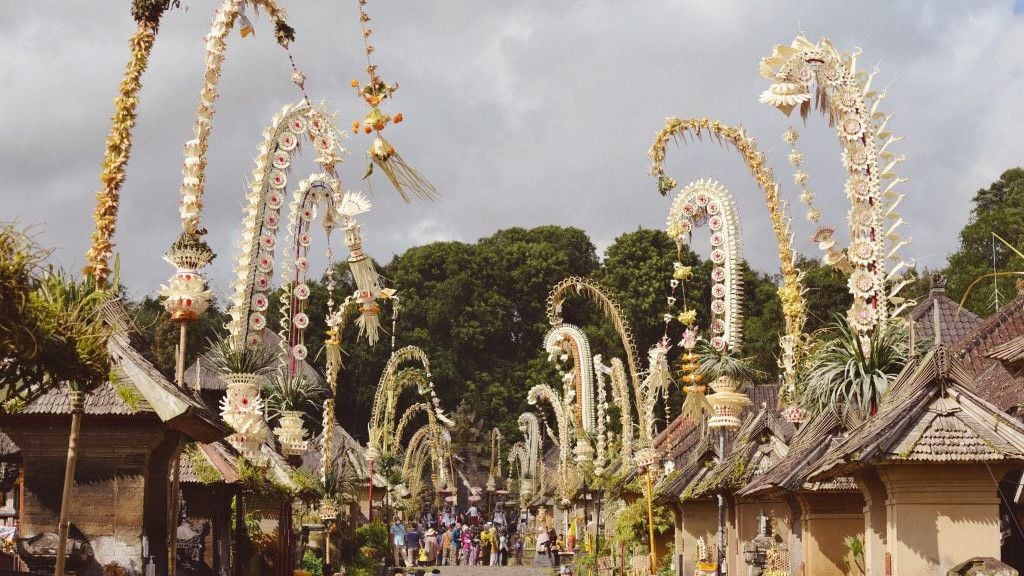
A Sacred Celebration of Triumph and Ancestral Connection
Balinese Galungan Day Ceremony. Bali is known for its rich cultural and spiritual traditions, with ceremonies and festivals deeply woven into the island’s Hindu beliefs. One of the most important and widely celebrated festivals in Balinese Hinduism is Galungan, a sacred time when the Balinese believe that the spirits of their ancestors return to Earth. This ten-day celebration symbolizes the triumph of good over evil, with Galungan Day marking the beginning of the festivities and Kuningan Day concluding it.
In this article, we will delve into the meaning of Galungan and Kuningan, explore the history of this significant festival, discuss when Galungan was first held, and examine the deep philosophy behind these sacred days.
1. Meaning of Galungan and Kuningan
Galungan is a Hindu-Balinese festival that celebrates the victory of Dharma (good) over Adharma (evil). It is believed that during this time, the ancestral spirits of the Balinese return to their homes, and the gods descend to Earth to join in the celebration. The festival is marked by rituals, offerings, and communal prayers to honor the deities and welcome the spirits of the ancestors.
The word “Galungan” comes from an ancient Balinese term meaning “winning” or “triumph”, signifying the victory of good forces over evil. This victory is not only external, as in the defeat of evil forces, but also internal, symbolizing the triumph of good qualities like truth, righteousness, and self-control within each individual.
Kuningan Day, which falls ten days after Galungan, marks the end of the festival and the return of the ancestral spirits to the spiritual realm. It is also a time to express gratitude and thankfulness for the blessings received during the festival. The name “Kuningan” is derived from the word “kuning”, meaning yellow in Indonesian, and refers to the yellow rice offerings made on this day, which symbolize prosperity and gratitude.
Together, Galungan and Kuningan form a complete cycle that reflects the duality of life—good and evil, light and darkness, life and death—and the need to maintain balance between these forces in order to live a harmonious life.
2. Galungan History
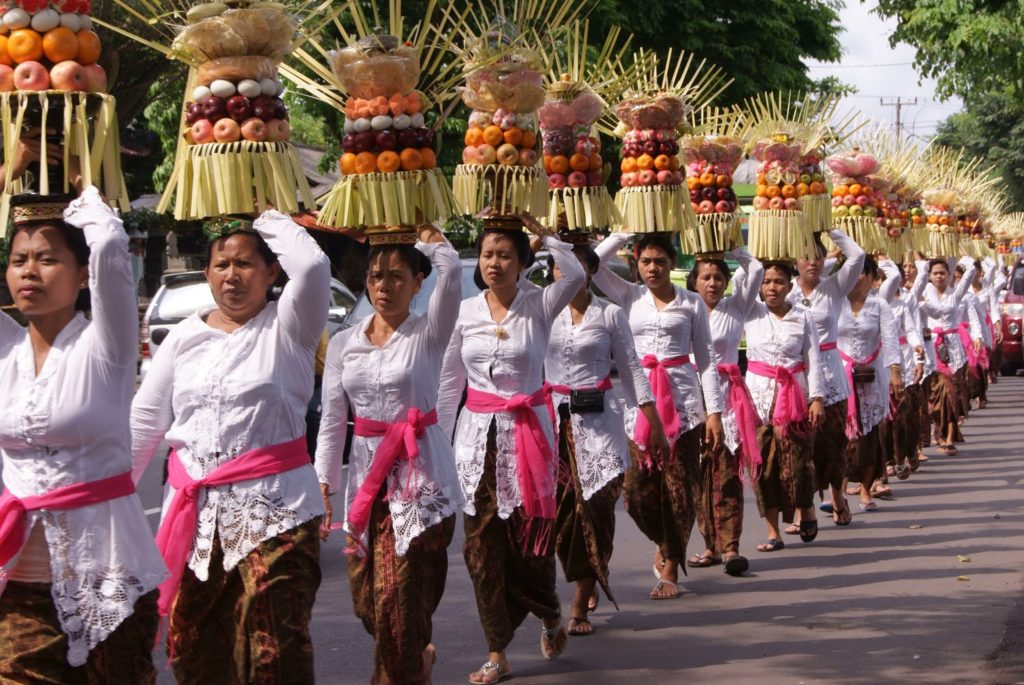
The origins of Galungan can be traced back to ancient Balinese Hinduism, where it was influenced by Hindu beliefs brought to the island from India during the first millennium CE. The exact history of Galungan is not entirely clear, but it is believed to have evolved from earlier festivals that celebrated agriculture, harvests, and ancestral worship. As Balinese Hinduism developed and integrated with local animistic traditions, Galungan became a more structured and spiritually significant event.
The story behind Galungan is linked to the mythical tale of Mayadenawa, a powerful king who defied the gods and refused to follow the path of righteousness. According to Balinese mythology, Mayadenawa used his magic to deceive and control his people, leading them astray from the worship of the gods and into a life of indulgence and ignorance. The gods, led by Indra, descended to Earth to confront Mayadenawa and restore balance.
A great battle ensued, and after many struggles, the forces of good triumphed over Mayadenawa and his evil army. Galungan commemorates this victory, symbolizing the eternal struggle between good and evil, and serves as a reminder to stay on the path of Dharma.
3. Galungan First Time Held
While the specific date of the first Galungan celebration is lost to history, ancient texts suggest that the festival has been celebrated in Bali for over a thousand years. It is mentioned in several old Balinese manuscripts, including the Lontar Sundarigama, a Hindu-Balinese script that contains detailed guidelines for conducting religious ceremonies.
According to these ancient records, Galungan was first celebrated to commemorate the triumph of Indra’s army over the forces of evil, as symbolized by the defeat of Mayadenawa. The festival has since evolved into a celebration that goes beyond just mythological symbolism; it has become an integral part of Balinese cultural and religious life.
The timing of Galungan is determined by the Balinese Pawukon calendar, a 210-day calendar system unique to Bali. This means that Galungan is celebrated twice a year, usually around every six months in the Gregorian calendar. The festival is observed during the Dunggulan week, the eleventh week in the Pawukon cycle, and always falls on a Wednesday.
4. Philosophy of Galungan and Kuningan Days
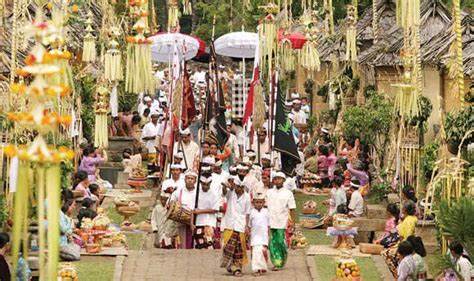
The philosophy behind Galungan and Kuningan is deeply rooted in Balinese Hinduism and serves as a spiritual reminder of the ongoing struggle between good and evil forces, both in the world and within ourselves.
Victory of Dharma over Adharma
The central theme of Galungan is the victory of Dharma (righteousness) over Adharma (unrighteousness). In Balinese culture, Dharma represents the moral and ethical principles that guide individuals in their daily lives. These include truth, compassion, self-discipline, and respect for others. Adharma, on the other hand, represents negative qualities such as ignorance, selfishness, and indulgence in material desires.
Galungan reminds the Balinese to strengthen their commitment to the path of Dharma and to resist the temptations of Adharma. This inner battle is something that every person must face, and Galungan serves as a time for reflection, purification, and renewal of one’s spiritual journey.
Connection with Ancestors
Another important aspect of Galungan is the reverence for ancestors. During the festival, it is believed that the spirits of the deceased return to Earth to visit their living descendants. The Balinese believe that these spirits protect their families and bring blessings, so it is essential to honor them through offerings, prayers, and rituals.
Family compounds, temples, and shrines are decorated with penjor, tall bamboo poles adorned with flowers, fruit, and offerings. These penjors are placed at the entrance of homes and temples as a way of welcoming the ancestors and the gods. The offerings, known as banten, are placed on family altars and temples as a sign of respect and gratitude to the ancestors.
This connection with ancestors emphasizes the Balinese belief in the cyclical nature of life, where the past, present, and future are interconnected. By honoring their ancestors, the Balinese reinforce their role in continuing the family lineage and maintaining the balance between the earthly and spiritual realms.
Kuningan: A Day of Gratitude and Reflection
Kuningan Day, which occurs ten days after Galungan, is a day of thanksgiving and reflection. It marks the departure of the ancestral spirits, who return to the spiritual realm after spending time with their descendants. On this day, special offerings are made to express gratitude for the blessings received and to ensure that the spirits depart in peace.
The offerings on Kuningan Day often include yellow rice, which symbolizes prosperity and abundance. The yellow color is also associated with the god Wisnu, the protector and sustainer of life. The Balinese believe that by making these offerings, they are ensuring the continued protection and blessings from the gods.
Kuningan also serves as a reminder of the impermanence of life. Just as the spirits come to Earth for a brief visit and then return to the spiritual realm, so too does life on Earth have its temporary moments. Kuningan encourages the Balinese to reflect on their lives, appreciate the present moment, and prepare for the eventual return to the spiritual world.
Balance and Harmony
The philosophy of balance and harmony is central to both Galungan and Kuningan. In Balinese culture, maintaining balance between opposing forces—such as good and evil, light and darkness, and life and death—is essential for spiritual and material well-being. Galungan and Kuningan emphasize the importance of finding harmony in all aspects of life, whether it is between humans and nature, individuals and their community, or the physical and spiritual worlds.
By participating in the rituals of Galungan and Kuningan, the Balinese reaffirm their commitment to living in accordance with these principles, ensuring that they remain aligned with the cosmic order and continue to receive blessings from the gods and ancestors.
Galungan and Kuningan as a Celebration of Life and Spirituality
The Galungan and Kuningan festival is a time of joy, reflection, and spiritual renewal for the Balinese. These sacred days remind them of the eternal battle between good and evil, the importance of honoring their ancestors, and the need to maintain balance in all aspects of life. By participating in the rituals, offerings, and prayers associated with Galungan and Kuningan, the Balinese reconnect with their spiritual roots, strengthen family and community bonds, and renew their commitment to living in harmony with the universe.
For those visiting Bali during Galungan and Kuningan, it is an opportunity to witness the island’s vibrant culture and deep spiritual traditions firsthand. From the beautiful penjor lining the streets to the elaborate offerings and temple ceremonies, Galungan and Kuningan provide a fascinating insight into the heart of Balinese life, where religion, community, and culture are intertwined in a celebration of the divine forces that guide the island.


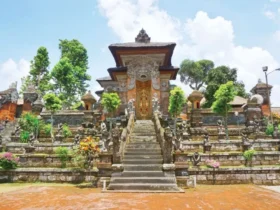





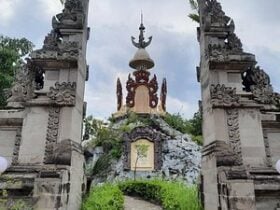
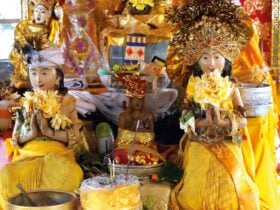
Leave a Review